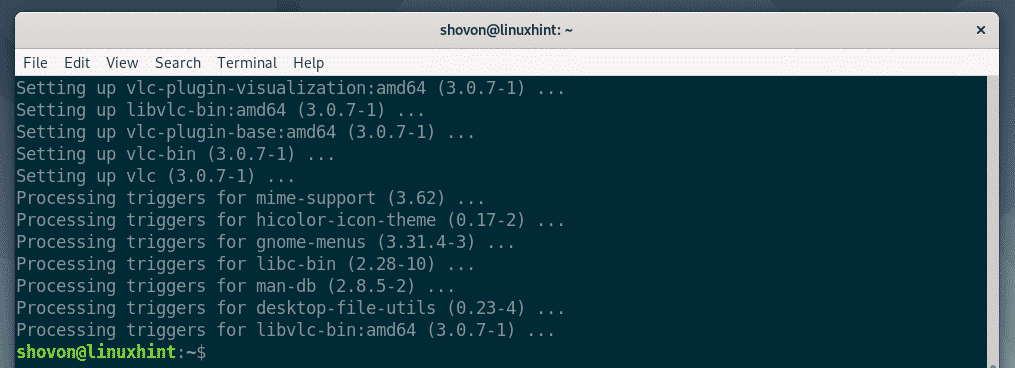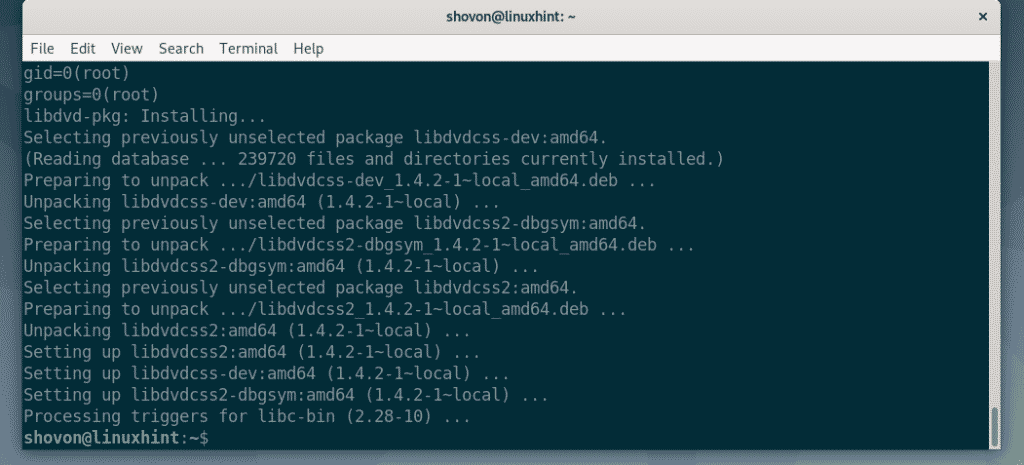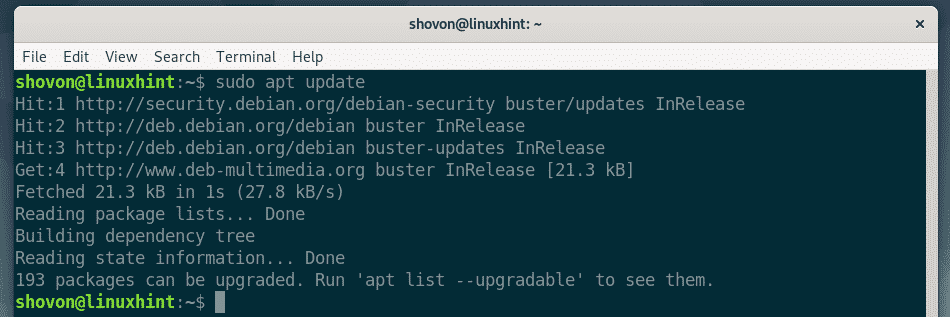Some codecs are free while others are proprietary in nature. So, most of them are not included on open source operating systems like Debian. As these codecs are not included, you can’t play every type of audio and video files once you install a fresh copy of Debian.
In this article, I am going to show you how to install multimedia codecs on Debian 10 Buster. So, let’s get started.
Enabling Official Contrib and Non-Free Repository:
The official package repository of Debian 10 has most of the common multimedia codecs already available. To install multimedia codecs, you have to enable the non-free and contrib package repositories on your Debian 10 machine.
To enable non-free repository, run the following command:

The non-free repository should be enabled.

The same way, enable the contrib repository with the following command.
Now, update the APT package repository cache with the following command:
The APT package repository cache should be updated.
Installing Multimedia Codecs from Official Debian 10 Repositories:
Now that you’ve enabled the non-free and contrib official Debian 10 repositories, you are ready to install multimedia codecs on Debian 10.
The best way to install multimedia codecs is to install your favorite audio/video player on Debian 10, which in turn will install all the required multimedia codecs automatically.
If you know the package name of the multimedia codec that you want to install, you can manually install each multimedia codecs separately.
VLC is one of the best multimedia player out there. There is a saying that if VLC can’t play a media file, then no other player can play it. So, installing VLC player should also install most of the multimedia codecs automatically. VLC player is available in the official package repository of Debian 10 Buster. So, you can easily install it with the APT package manager.
To install VLC player, run the following command:
Now, press Y and then press <Enter> to continue the installation.
APT will download and install all the required packages.
At this point, VLC should be installed.
Now, you should be able to play almost any type of media files.
Installing Some Other Codecs:
If you need support for one of the following codecs, then you have to install the libavcodec-extra package on Debian 10.
- OpenCORE Adaptive Multi-Rate (AMR) Narrow-Band (AMRNB Encoder/Decoder)
- OpenCORE Adaptive Multi-Rate (AMR) Wide-Band (AMRWB Decoder)
- Android VisualOn AAC (AAC Encoder)
- Android VisualOn Adaptive Multi-Rate (AMR) Wide-Band (AMRWB Encoder)
You can install the libavcodec-extra package from the official Debian 10 package repository with the following command:
Enabling DVD Playback:
To play DVDs in Debian 10, you have to install libdvdread4 and libdvdcss2 packages from the official package repository of Debian 10 with the following command:
Now, press Y and then press <Enter> to confirm the installation.
When you see this window, select <OK> and press <Enter>.
Again, select <OK> and press <Enter>.
Select <Yes> if you want to enable automatic upgrades for libdvdcss2 package. Otherwise, select <No>. Once you’re done, press <Enter>.
The required packages should be installed.
Now, run the following command:
Now, select <Yes> and press <Enter>.
libdvdcss2 should be configured correctly.
Installing Windows Media Codecs:
If you want to play WMV media files on Debian 10, then you have to install w64codecs (for 64-bit systems) or w32codecs (for 32-bit systems) package from Deb-Multimedia third party package repository.
To add the Deb-Multimedia repository on Debian 10, run the following command:
| sudo tee /etc/apt/sources.list.d/deb-multimedia.list
Now, update the APT package repository cache with the following command:
The APT package repository cache should be updated.
Now, install the Deb-Multimedia GPG key with the following command:
Now, press Y and then press <Enter> to confirm the installation.
The GPG key should be added.
Now, you can update the APT package repository cache as usual.
Now, to enable WMV support for 64-bit Debian 10 installation, run the following command:
Now, to enable WMV support for 32-bit Debian 10 installation, run the following command:
The required codecs should be installed.
Now, you should be able to play WMV media files.
So, that’s basically how you install multimedia codecs on Debian 10. Thanks for reading this article.



























NOTE: (security alert)
… be advised that Debian recommends not using the third-party repo
that was detailed for the Windows media …